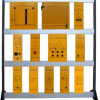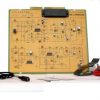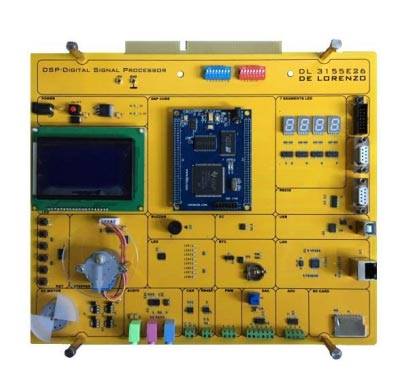DSP trainer help students learn the internal architecture and programming of the DSP, floating-point data processing and operation of peripherals, such as UART, IIC, ADC, DAC, Timer, Display, USB, NET and so on.
DSP processor:
• High-Performance Static CMOS Technology
• 150 MHz (6.67-ns Cycle Time)
• Built-in FLASH 256KB
• Built-in RAM 36KB
• Low-Power (1.8-V Core at 135 MHz,1.9-V Core at 150 MHz, 3.3-V I/O)
• Design JTAG Boundary Scan Support IEEE Standard 1149.1-1990 IEEE Standard Test Access Port and Boundary-Scan Architecture
THEORETICAL TOPICS
• Introduction to the circuit board
• Assembly language program
• C language basic
• C language and assembly mutual calling
• DSP basic arithmetical operation
• Buzzer
• Keypad
• Timer
• External interruption
• Serial communication
• 485 communication
• I2C
• 7-segment LED display
• 1602 LCD display
• 12864 LCD
• sound recording and playing
• RTC
• AD /DA conversion
• CAN communication
• AC/DC motor control
• SD card reading and writing
• extended RAM
• internet communication
• USB communication
• FLASH programming
• Finite impulse response (FIR)
• Infinite impulse response(IIR)
• Fast Fourier transform(FFT)
CIRCUIT BLOCKS
– Motherboard:
main processor: floating point chip, 32bit data bus, working frequency maximum 150MHz
– Sub- boards:
• Build-in 128K*16 bit FLASH, 18K*16 bit SRAM, 4K*16 bit BOOT ROM, 1K*16 bit OTP ROMDSP
• Extended 256K*16 bit SRAM, 512K*16 bit FLASH
• 4 7-segment tube interface
• 6 pcs LED for displaying the state
• 6 pcs buttons
• 1 pcs buzzer
• 1 pcs reset circuit, can reset manually
• 2 RS-232 interface
• 1 CAN interface
• 1 RS-485 interface
• 1 I2C interface
• 1 RTC interface
• AD /DA input interface
• Audio input and output interface
• 1 Two-kinds LCD interfaces
• 1 DC motor control interface
• 1 stepper motor control interface
• 1 SD card interface
• 1 USB slave interface
• 1 Ethernet interface

















